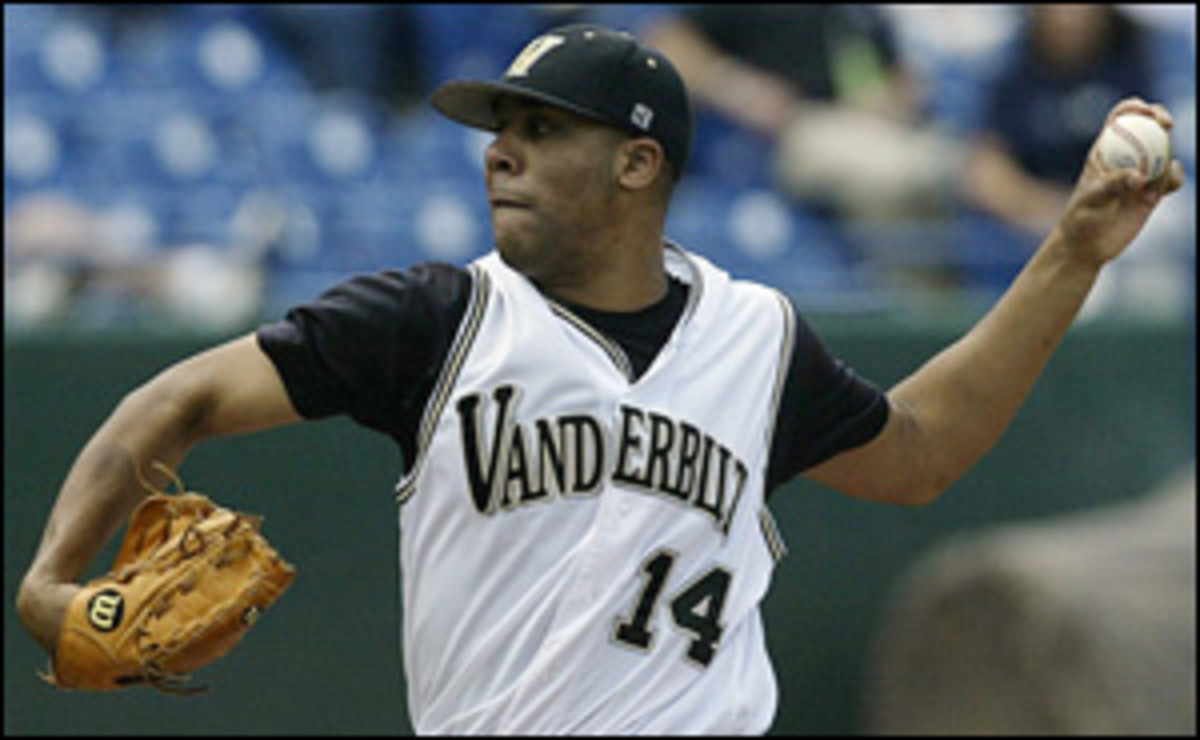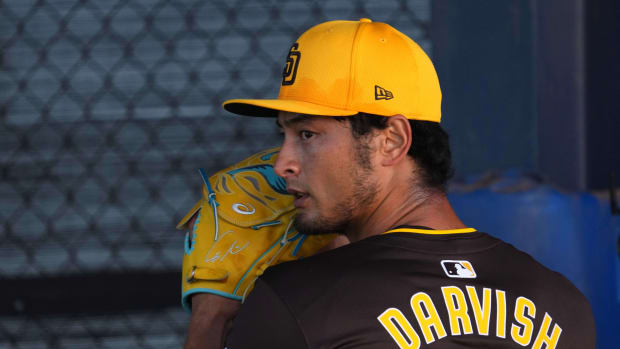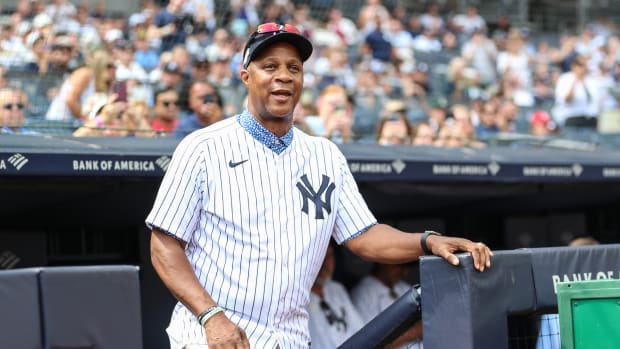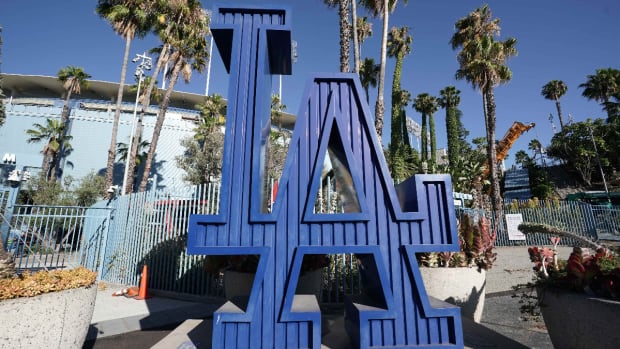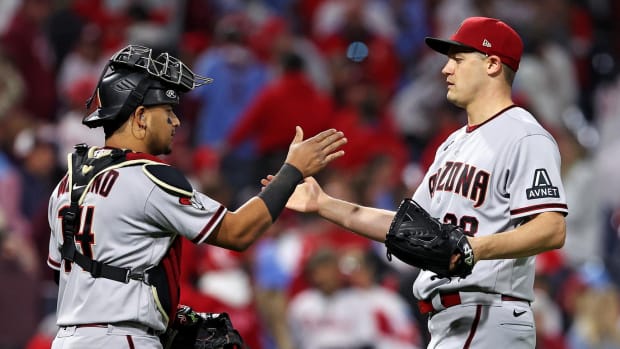Top 20 MLB Amateur Draft Prospects
The Major League Baseball draft, as we have long known it, no longer exists. In its place is the 2007 draft, high on talent and -- with the event televised for the first time -- high on exposure. A change in the rules has left Aug. 15 as a must-sign date for all drafted players, and though that would appear to give the teams leverage, bonus demands have left projecting the first-round impossible even 24 hours before the event. While super-agent Scott Boras has a huge effect on where players get drafted, his presence has no bearing on my top 20 draft board:
1. David Price LHP, Vanderbilt After throwing 130 pitches in a 17-strikeout gem on Friday, Price's illustrious college career ended on Tuesday when the Commodores ace allowed a go-ahead home run in a 10th-inning relief appearance. While Price will leave Nashville with a sour taste in his mouth, the southpaw can now spend the rest of the week focusing on signing on the dotted line with the Tampa Bay Devil Rays. Price has been the top player on Tampa's draft board from Day 1, and as a result the lefty should garner the largest top-pick bonus in recent memory. In return the Devil Rays get a lengthy lefty who dials it up to 96 mph and makes hitters miss with a slider that could one day be second in the American League only to Scott Kazmir's. Reminds me of: A left-handed Mark Fidrych, if only for their mutual gangliness and fastball-slider approach.
2. Matt Wieters C, Georgia Tech After topping my draft board in February, Wieters failed to continue his red-hot success in the 2006 college postseason and Cape Cod League. However, with only mediocre numbers for a Golden Spikes favorite, Wieters has barely slid on draft boards. At 6-foot-5, Wieters will be the tallest catcher in major-league history if he makes it to the Show, and he has both the arm and agility to succeed behind the dish despite his height. The switch-hitter is a strong middle-of-the-order presence who projects to 30-homer power in the bigs. Reminds me of: Reggie Smith.
3. Rick Porcello RHP, New Jersey HS Like Wieters, the only thing scaring teams away from Porcello at this point is rumors of his bonus demands -- floated by Boras to exceed $5 million. Still, Porcello is the most talented prep right-hander of this decade, with projectable size matching mid-90s fastball control. Porcello throws three plus-pitches, but in no time he could be the minors' best at the generic four: fastball, curveball, slider and change. He will have growing pains as he adds bulk and changes shape, but without question, he has this draft's highest upside. Reminds me of: Kevin Millwood at this point, though someone pointed out to me that Porcello bears a few similarities to Don Drysdale.
4. Josh Vitters 3B/LF, California HS An illness sapped Vitters' strength and derailed his senior-year numbers, but every team in baseball rates the California slugger as the nation's best high school position prospect. Vitters is a gifted hitter with fantastic power that has been showcased in pre-draft workouts. His biggest flaw is a lack of a position; like many slower prep third baseman Vitters is likely headed across the diamond or to left field in pro baseball. Still, his bat is good enough to push him into in the top five. Reminds me of: Paul Konerko.
5. Jarrod Parker RHP, Indiana HS Last year, the importance of size in a pitcher was a hot-button issue with Tim Lincecum and Jeremy Jeffress both clocking in at close to 100 mph with heights close to 6 feet. The two are more data points that size can be unimportant if supplemented by other factors, which in Parker's case is the best lightning-quick arm action in recent memory. Parker hasn't needed much more than his big fastball to get Midwest hitters out, but his curveball has the makings of a plus-pitch. A big senior season has catapulted Parker up draft boards, as teams see the right-hander's downside to be a good major league reliever. Reminds me of: Pete Harnisch.
6. Mike Moustakas 3B/C, California HS No player has had more senior helium than Moustakas, who has set California high school records and found a home among the top 10 picks. The knocks on Moustakas are the same that have always been there -- his size, his lack of position -- but his powerful final season have allowed teams to overlook his faults. Most teams that draft in the top 10 are viewing Moustakas as a catcher, because while he doesn't have the range to stick at shortstop (where he played as a high schooler), he has the lateral movement and throwing arm to succeed behind the dish. Furthermore, while his small frame limits his power potential, Moustakas is a smart hitter with good bat speed; he should annually hit 20-30 home runs. Reminds me of: Darren Daulton.
7. Phillipe Aumont RHP, Canada HS Aumont's stock has been one of the most volatile in the first round this spring: He entered the draft season as a second-round arm, moved into the first round and then the top 10, and now the 6-foot-7 right-hander seems to have found a home in the middle of the first round. I still say that's too low for Aumont, who used his size to produce the draft's heaviest fastball. His Canadian pedigree has left him rough around the edges, and both his breaking ball and delivery will need tinkering, but Aumont also succeeded against pro hitters in a stint around Florida in spring training. While he's a good bet to go through growing pains in the minors, few first rounders will offer Aumont's ceiling. Reminds me of: Rick Sutcliffe.
8. Jason Heyward OF, Georgia HS Heyward's combination of raw power and good approach leaves his offensive ceiling second to only Vitters' in this draft. Heyward was pitched around for much of his senior season, but he peaked at the right time in May, leaving a strong impression on numerous scouting directors and crosscheckers. Heyward is a big boy who will start in right field but is likely to eventually end up at first base, where his left-handed power will play. There are very few holes in Heyward's game, and if his opponents had been more aggressive his draft status could very well have been flip-flopped with Vitters'. Reminds me of: The widespread Fred McGriff comparisons make perfect sense.
9. Ross Detwiler LHP, Missouri State The rare collegian who is both raw and accomplished, Detwiler has the numbers and projectability to be a top 10 selection. He weighs about 180 pounds soaking wet, and at 6-foot-4 that has many teams wondering how much muscle they could add to his frame. With muscle often comes velocity, and since Detwiler already touches 94 mph, teams are wondering if he will be able to one day pitch in the mid- to upper-90s. The knocks on Detwiler are that his breaking ball isn't quite good enough and that his track record isn't sparkling -- the southpaw feasted on bad hitters in a lackluster schedule at Missouri State. The team that drafts him will have a lot of work on their hands, but southpaws with ace potential are a rare breed. Reminds me of: Britt Burns.
10. Daniel Moskos LHP, Clemson Moskos is, in many ways, Detwiler's opposite. Moskos has already filled out his much shorter frame, and scouts have labeled his delivery as maximum effort -- 95 mph, in relief, is really all Moskos can provide. I think he projects much better out of the bullpen, as Moskos' fastball and slider are suited for short stints. However, given his success on Friday nights with Clemson this season, a team will see if Moskos can be successful throwing three or four different pitches with less effort. Moskos is very good at keeping his fastball low in the zone and inducing groundballs, so it is certainly a chance worth taking. Reminds me of: To send it back to another era, Orioles 20-game winner Steve Barber.
11. Beau Mills 3B, Lewis-Clark State After leaving Fresno State for academic reasons last season Mills transferred to legendary coach Ed Cheff's NAIA powerhouse, and for all of 2007 Mills has been the most talented player on the diamond. He set the NAIA single-season home run mark with 38 this season, but that overstates his power; he's more of an all-around hitter. Mills lacks a position (he'll end up at first base or left field), so his bat will have to carry him at the next level. Reminds me of: Josh Phelps in his Baseball Prospectus cover boy days.
12. Madison Bumgarner LHP, North Carolina HS Given his combination of size (6-foot-5, 220) and handedness, Bumgarner was long slated as a first-round prospect. At this point he's merely a fastball pitcher, but that has been enough, as the pitch has routinely been in the mid-90s this season. A pitching coach will need to instruct Bumgarner on a curveball as well as finding a consistent delivery, but the blueprint for success is there. Reminds me of: Steve Avery, shortly after coming up.
13. Matt Harvey RHP, Connecticut HS At the onset of the summer showcase tour a year ago Harvey was the top prep pitcher on most team's draft boards. Since then nothing has changed within his repertoire. The long right-hander still pitches in the low 90s and can touch 96, and he still shows off a nasty curveball that led to six strikeouts in six at-bats at the East Coast Showcase. But a lack of the step forward this spring and the presence of Boras as his agent have led to Harvey's small drop. Reminds me of: Matt Morris.
14. Matt Dominguez 3B, California HS A bit overshadowed by teammate Moustakas and fellow California third baseman Vitters, Dominguez was a little lost in the fray this spring. However, in comparisons to the two aforementioned players, Dominguez stood out with professional-ready defense, which is the biggest knock on the other two. Dominguez doesn't have huge power but it plays as average for the position, and he has enough strength to add to the frame that he could be looking at 30 home runs in the right scenario. Reminds me of: Joe Crede.
15. Michael Main RHP, Florida HS Main has been known to scouts since he was a freshman, when he was already touching 90 mph. Since then his velocity has moved up even he has remained on the small side -- at a shade over 6 feet, Main has hit 98 mph this season. A gifted center fielder with fantastic 60 times, he has scouts excited at the prospect of how his athleticism will help on the mound. His secondary pitches have been inconsistent, but experts have praised either his curveball or his change up at different times this spring. Reminds me of: Tim Hudson, in terms of athleticism.
16. Blake Beavan RHP, Texas HS Beavan is the stereotypical Texan right-hander, a hard-thrower who's built like a truck. His 6-foot-7, 210-pound frame has little weight to add, and his delivery has been inconsistent, but scouts believe he'll pitch 93-95 mph regularly in the pros. What makes Beavan special is his lights-out slider, a pitch that could land him a closer job down the road. However, that's way down the road, as his size has many teams envisioning an innings-eater. Reminds me of: Andy Benes.
17. Casey Weathers RHP, Vanderbilt A position player when he arrived on the Vanderbilt campus, like so many converts, Weathers' offensive production never matched his throwing arm. Once he moved to the mound everything clicked, and Weathers has been a perfect fit as a closer. A bulldog, he attacks hitters with mid-to-high-90s heat. He doesn't get on top of his slider often enough, but it can be a weapon at 90 mph. Weathers will move up the ladder faster than any player in the draft, and for many ailing bullpens he should save the trouble of a hefty winter purchase for 2008. Reminds me of: Felix Rodriguez.
18. Kevin Ahrens 3B, Texas HS Ahrens has really boosted his stock this spring, proving that a late-career move to switch-hitting wasn't a bad idea. A natural right-handed hitter, he generates very good bat speed and power from both sides. A shortstop in Texas, Ahrens probably won't play a game at the position in pro ball, but his arm is more than adequate for the hot corner. He's a patient hitter who dominated a tough Houston baseball scene, and with no high bonus demands associated with his name, he could go as high as 10th overall. Reminds me of: Ken Caminiti.
19. Devin Mesoraco C, Pennsylvania HS The kid from Punxsutawney has kept hitting and never looked back in 2007, sneaking in from the second round to a potential date within the top 10. A high school star seems to do this every season, and while this type of player is often overstated, he sometimes becomes Jay Bruce. Mesoraco is a very good defensive catcher with a strong arm and above-average lateral movement. At the plate he mixes a level swing with very good bat speed, lending well to strong power on fastballs. Reminds me of: Joe Girardi with power.
20. Josh Smoker LHP, Georgia HS Smoker has been on the scouts' radar for a long time, so I think he's been a bit overrated within his draft class. This pool has solid depth for high school pitching, and while Smoker is a very good southpaw his ceiling is not that of the names above him on this list. Smoker throws around 90 mph with the best left-handed slider south of Price's. Smoker hasn't needed a changeup often at Georgia, and if he keeps control of his fastball he might not need it often in pro ball, either. Reminds me of: John Danks.






























